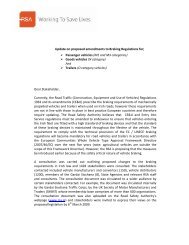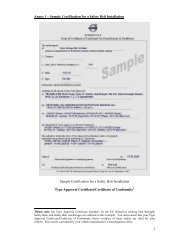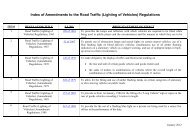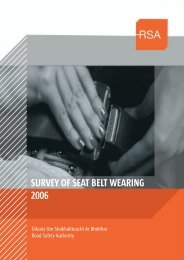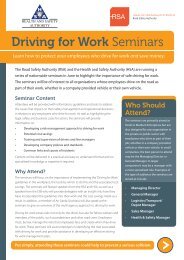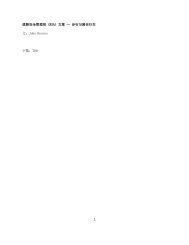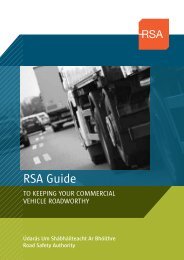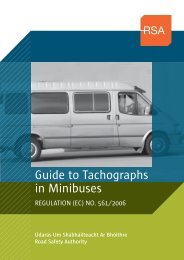NCT Manual. - National Car Testing Service
NCT Manual. - National Car Testing Service
NCT Manual. - National Car Testing Service
You also want an ePaper? Increase the reach of your titles
YUMPU automatically turns print PDFs into web optimized ePapers that Google loves.
35<br />
BODYWORK<br />
NATIONAL CAR TEST (<strong>NCT</strong>) MANUAL 2012<br />
Method of <strong>Testing</strong><br />
Examine primary structural components (including floor pan) for cracks, security, damage or rust. Check where repairs have<br />
been carried out that there is an engineer’s report stating that the original strength and safety of the vehicle has not been<br />
compromised and that any welding or brazing has been carried out using good engineering practice. Check from both front and<br />
rear that the body is sitting squarely. Examine all secondary structural components for security, rust or jagged edges. Check that<br />
bumpers, guards and body panels are secure and not likely to injure pedestrians or other road users.<br />
Check that fumes are unlikely to enter the vehicle e.g. torn gear lever boots.<br />
Check that the bonnet and boot lid catches are operating properly. In the case of front opening bonnets, ensure that the safety<br />
catch is fitted and operating properly.<br />
Primary Structure<br />
1. Primary structure includes any structure or component which, if it collapsed, would make the vehicle uncontrollable or would<br />
considerably reduce occupant safety in the event of an accident. Examples of components in this category are illustrated on<br />
page 57. Areas within 100mm of door locks or hinges would be considered primary structure.<br />
Secondary Structure<br />
2. Secondary structure includes any structure or component which, if it collapsed, would not immediately affect a vehicle’s<br />
controllability or the protection provided by its built-in safety systems. Normally, rust would not be a cause for rejection in<br />
these components but extensive rust is usually either hazardous to persons in or near the vehicle because of its sharp edges or<br />
because exhaust fumes can get into the vehicle. Extensive rust must therefore be rejected. The illustration on page 57 shows<br />
examples of secondary structure.<br />
NOTES<br />
1. A missing or damaged mud flap is not a reason for failure.<br />
2. The judgement to be made is whether or not the manufacturer’s original strength has been maintained.<br />
Where a manufacturer has used brazing in some area of the manufacturing process, repairs using a<br />
similar process and to a similar standard of workmanship is acceptable. Using brazing to repair chassis<br />
members is not acceptable.<br />
3. Where a boot is completely full, an examination cannot be made and therefore a pass certificate cannot<br />
be issued.<br />
56



